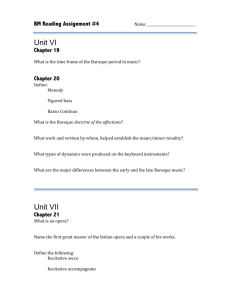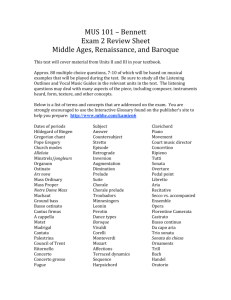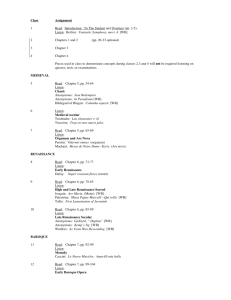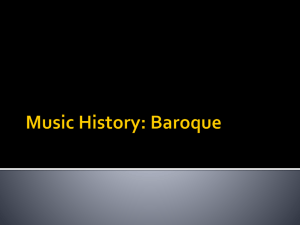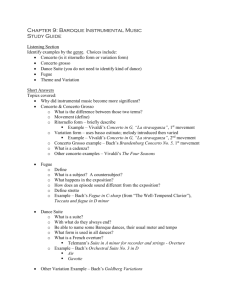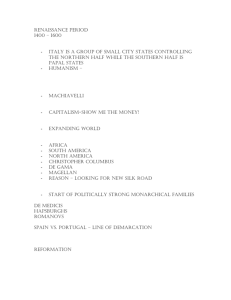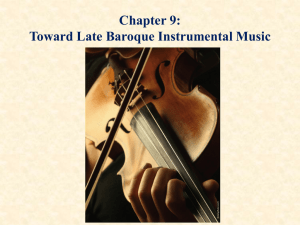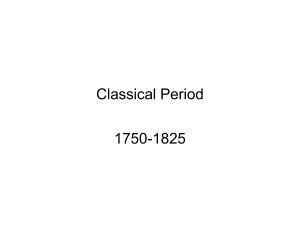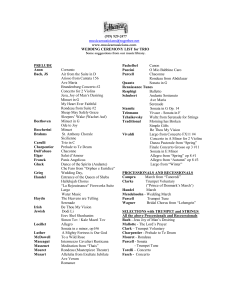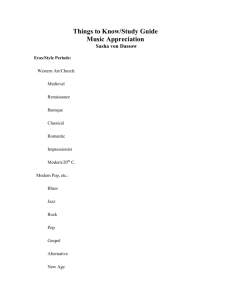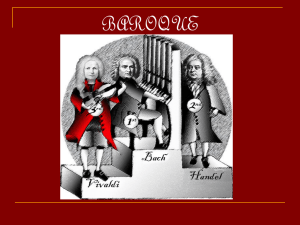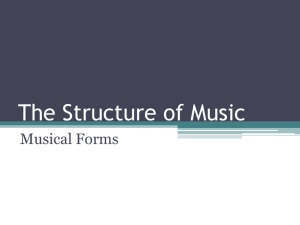Terms and Definitions – Jan
advertisement
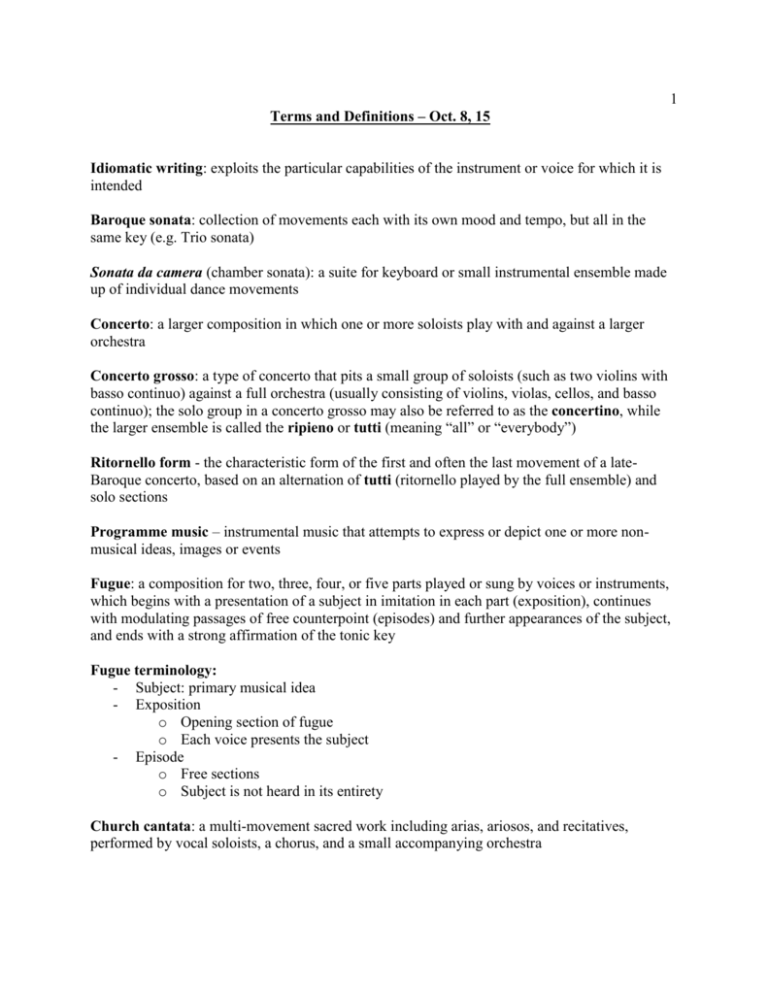
1 Terms and Definitions – Oct. 8, 15 Idiomatic writing: exploits the particular capabilities of the instrument or voice for which it is intended Baroque sonata: collection of movements each with its own mood and tempo, but all in the same key (e.g. Trio sonata) Sonata da camera (chamber sonata): a suite for keyboard or small instrumental ensemble made up of individual dance movements Concerto: a larger composition in which one or more soloists play with and against a larger orchestra Concerto grosso: a type of concerto that pits a small group of soloists (such as two violins with basso continuo) against a full orchestra (usually consisting of violins, violas, cellos, and basso continuo); the solo group in a concerto grosso may also be referred to as the concertino, while the larger ensemble is called the ripieno or tutti (meaning “all” or “everybody”) Ritornello form - the characteristic form of the first and often the last movement of a lateBaroque concerto, based on an alternation of tutti (ritornello played by the full ensemble) and solo sections Programme music – instrumental music that attempts to express or depict one or more nonmusical ideas, images or events Fugue: a composition for two, three, four, or five parts played or sung by voices or instruments, which begins with a presentation of a subject in imitation in each part (exposition), continues with modulating passages of free counterpoint (episodes) and further appearances of the subject, and ends with a strong affirmation of the tonic key Fugue terminology: - Subject: primary musical idea - Exposition o Opening section of fugue o Each voice presents the subject - Episode o Free sections o Subject is not heard in its entirety Church cantata: a multi-movement sacred work including arias, ariosos, and recitatives, performed by vocal soloists, a chorus, and a small accompanying orchestra 2 Opera seria: (literally, “serious opera”) a genre of opera that dominated Baroque opera, making use of serious historical or mythological subjects Da capo aria: an aria with 2 musical sections, A and B, with the second usually contrasting in key and mood. When the singer reaches the end of part B, he or she is instructed by the words “da capo” to “take it from the top” and thus repeat A, note for note Oratorio: an extended music drama with a text based on religious subject matter involving an overture, arias, recitatives, and choruses, and sung in a church or theatre without costumes and scenery [Beginning of Classical Era terms] Antecedent phrase: the opening, incomplete-sounding phrase of a melody; often followed by a consequent phrase that brings the melody to closure – Often cadences on the dominant Consequent phrase: the second phrase of a two-part melodic unit that b rings a melody to a point of repose and closure – Usually cadences on the tonic Alberti bass: a pattern of accompaniment whereby, instead of having the pitches of a chord sound all together, the notes are played in succession to provide a continual stream of sound
